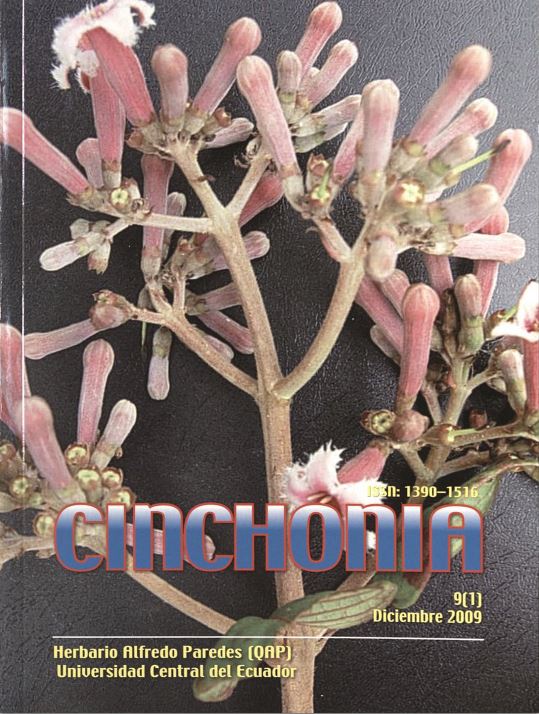ARACEAE DE LA RESERVA ORQUIDEOLÓGICA PAHUMA, PICHINCHA - ECUADOR
Main Article Content
Abstract
The Orchids Reserve Pahuma, locates in the km 30 of the route Quito-Nanegalito, among the 1.700-2.500 m, vegetable formation Forest of mist mountainous. It includes an extension of 905 hectares, in the majority mature forest. The fieldwork was realized between 1996 and 2007 sporadically, three samplings were realized of transects of 0.1 ha, radial model to different altitude, besides collects at random. The specimens were mounted and identified in Alfredo Paredes (QAP) and National (QCNE) herbariums, checked by the Doctor Thomas Croat of the Missouri Botanical Garden (MO). The information was analyzed according to the indexes of Simpson’s Diversity and that of Sorensen’s Similarity. 35 species were registered, correspondent to 5 genres, the most diverse is Anthurium followed of Philodendron. Stenospermation. Xanthosoma and finally Chiorospatha. In the transects: to 36 Cerón & Reyes: Araceae de Pahuma 1.850 m. were found 192 individuals, 13 species, and the four species more frequent are: Anthurium ovatifolium, A. microspadix, A. longicaudatum, A. dolichostachyum; to 2.000 m, 532 individuals, 16 species, more frequent species: A. ochreatum, A. versicolor, A. longicaudatum, A. mindense; to 2.350 m, 390 individuals, 13 species, more frequent species: A. ovatifolium, A. altissimum, A. corrugatum, A. umbraculum. Three samplings add 23 species (65.7%). Simpson’s Index, it is interpreted in 3 samplings as a diversity near the average, whereas that of Similarity shows similar numbers among 55.2 and 62.1%. Six species are common to all the gradients: A. ovatifolium. A. microspadix, A. tremulum, A. penningtonii, A. mindense. and Philodendron oligospermum. Pahuma’s forest, it is an important refuge of herbaceous (Orchidaceae, Bromeliaceae, Gesneriaceae. ferns and mosses). In spite of the fact that the Father Luis Sodiro collected intensely the Araceae 100 years ago approximately, it is possible to find new species for the science in these localities yet, beside to giving ornamental and ecological benefits.

